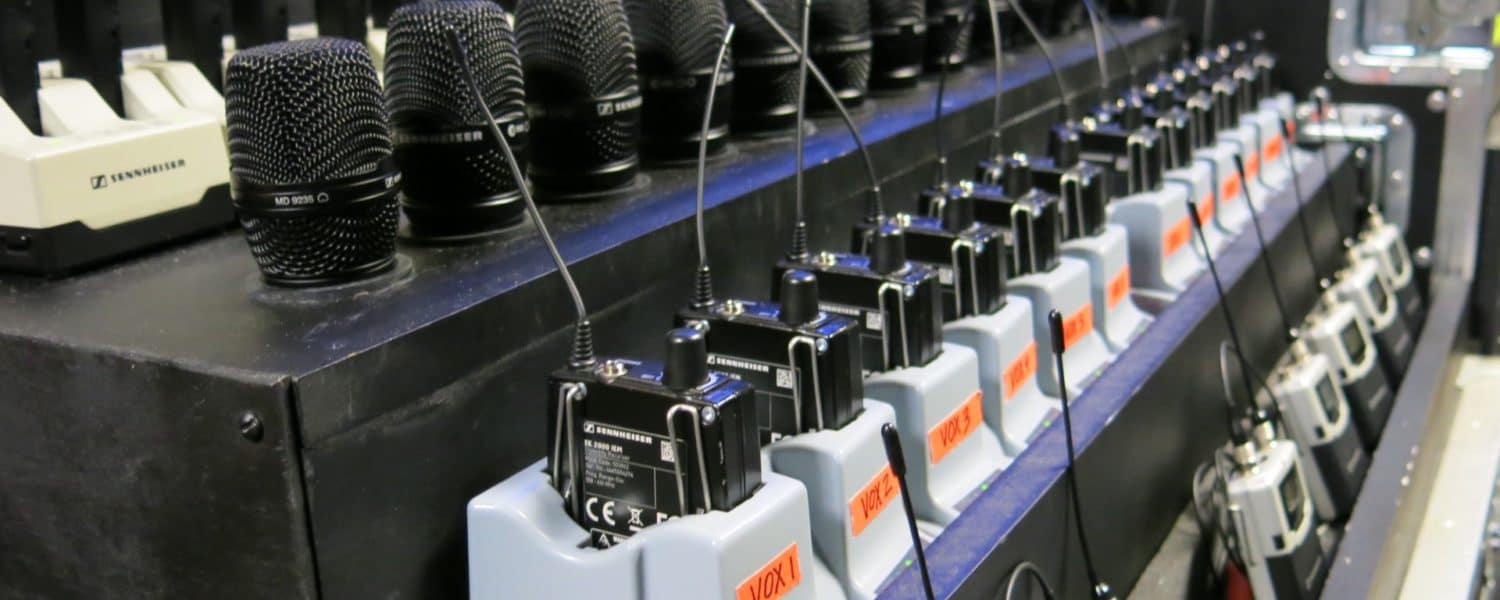There’s been a lot of discussion and questions regarding the FCC’s 600 MHz incentive auction. We contacted Joe Ciaudelli of Sennheiser to walk us through some specifics of the update and options houses of worship have. We also touched on steps organizations can take to achieve synergy when they have microphones from multiple manufacturers on multiple frequencies
FCC website: In the May 2014 Incentive Auction Report and Order, the FCC adopted rules to implement the broadcast television spectrum incentive auction, which will involve reorganizing the existing television band and repurposing a portion of the UHF television band for new wireless broadband services, which will no longer be available to wireless microphones. This repurposing of the 600 MHz spectrum will, therefore, affect wireless microphone operations across the current TV bands in the future.
What are the main points to know about the incentive auction?
If you have wireless microphones that don’t tune above 608 MHz the incentive auction does not impact them. Systems that tune between 470 and 608 will remain under traditional rules. We still don’t know if the FCC will allow equipment to be modified and then put back into the field. If you do have systems that operate in the 600 band, you can still operate them for about 3 years.
What can you explain about licensed vs. unlicensed operators?
Licensed operators have rights and privileges over unlicensed operation of any device. If you’re eligible to get a license, I encourage you to do so. The benefit of having priority over other operators and ensuring they don’t interfere with you is very much worth the paperwork. While we’ve lost the 600 MHz band, we have successfully gained access to alternate bands. 941-960 MHz is being added, which is for licensed microphone operators only.
How could an organization get a license?
Traditionally, to be a licensed operator you had to be a broadcaster, or cable station, or other content producer. However, those privileges have been broadened to include venues or sound companies that routinely use 50 wireless systems or more. Houses of worship that broadcast are instantly eligible, regardless of how many microphones they use.
What if you’re an unlicensed operator?
In general, there will be new equipment that is introduced into the market that will comply with the new rules. In addition there are going to be two pockets in the 600 MHz band where you can operate after the repurposing is complete. These are the duplex gap and the lower guard band. You will need to register your microphone if you do choose to operate in these pockets.
If you’re just operating a few microphones, you should be able to do so easily in the 500 MHz band. Let’s say you’re operating 20 microphones and you can’t hold them all in the empty channels that exist in your area in 500 MHz band. Going to the two pockets of 600 MHz will be helpful.
What about other bands for unlicensed devices?
Over the past couple of years manufacturers have introduced systems that work in other bands that are for unlicensed devices such as 2.4 GHz or 1.9 GHz. These are good for semi-professional applications where not a lot of microphones are used simultaneously and it’s a shorter distance.
What if you already have a system that operates in the 600 MHz band and will be adversely affected?
You’ve got a few options:
- Like Sennheiser, many manufacturers are offering a trade-in program.
- You can sell the microphone outside of the United States. Just clearly mark that it’s for use only outside of the U.S.
- You can donate it to churches or missions outside of the United States.
Often times we see organizations who have different sound engineers, musicians, etc. who have personal preferences on wireless systems. There may be wireless systems that are different manufacturers, or operating on different bands on the same stage. What are some best practices for making this work?
You can make them work together with 3 steps:
- Find out what the vacant channels are in the town you’re operating in
- You can go online to FCC approved spectrum databases and you can enter your zip code and it will list the channels that are open for wireless microphones.
- Make sure everyone uses a frequency within these channels
- Make sure everyone is on unique frequencies
- Avoid equally spaced frequencies. If you were to use 500, 501, and 502 (equally spaced by 1) this won’t work well.
- You’d be better off doing 500, 501, 502.2, etc.
- Coordinate those frequencies. Mathematically certain frequencies are more compatible than others.
- There is free frequency coordination software on Sennheiser or other manufacturer’s websites.
- You can input the frequencies that everyone is using and make sure they’re compatible. If they aren’t compatible, the software can pinpoint which devices are the problem and suggest a new frequency.
To learn more about the FCC Incentive Action Update, visit www.spectrumaffairs.com or www.Sennheiserusa.com/spectrum.
Peachstate Audio is a family-owned business that has been a part of the Professional Audio Community for 40 years. The primary customer bases are houses of worship, schools, theatres, and corporate conferencing. Peachstate offers system design, order, and delivery managed by their staff of trained A/V technicians, www.peachstateaudio.com.















